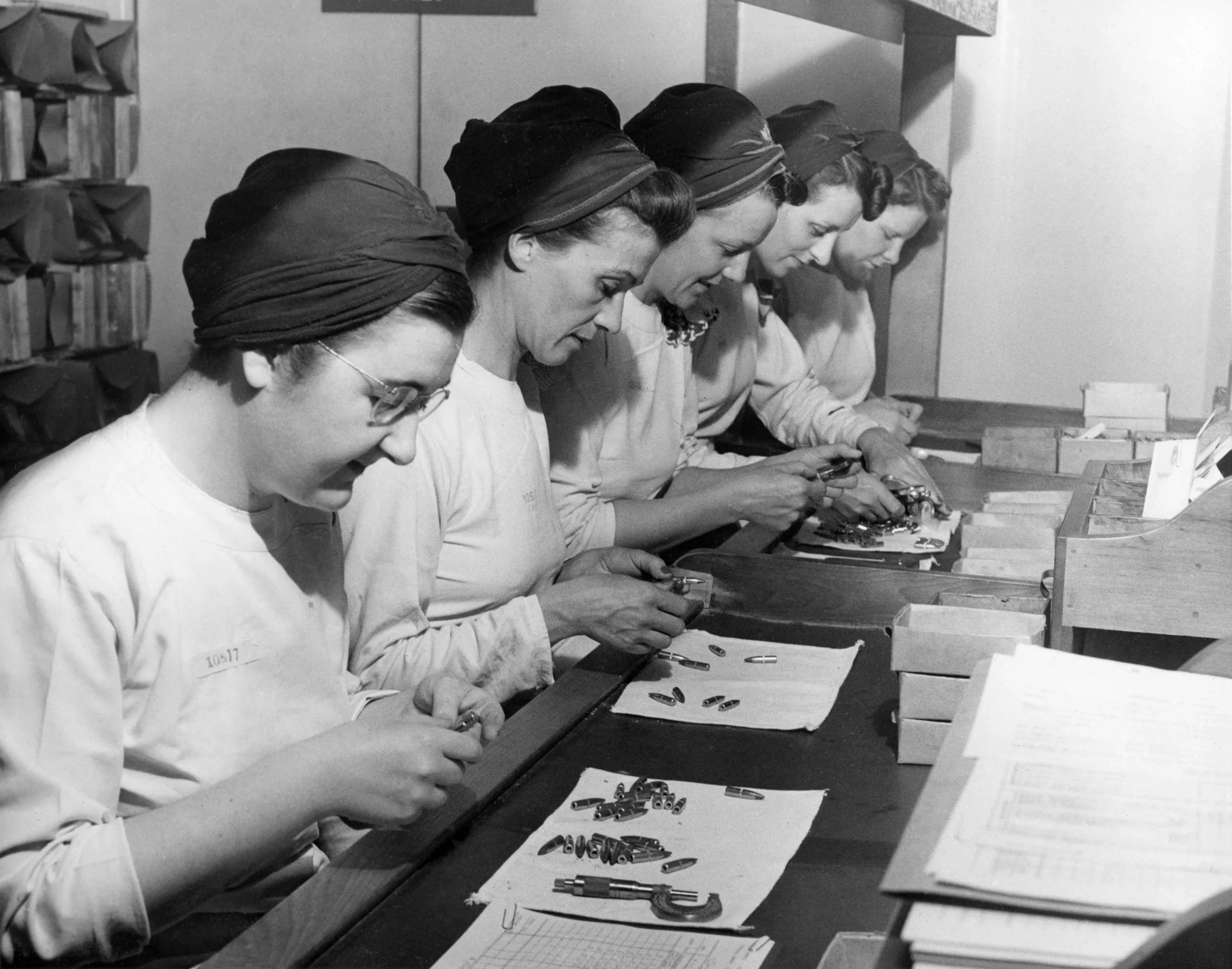
Canadian Women
During the Second World War, Canadian women contributed to the war effort from the Home Front. They planted victory gardens, bought war bonds and sent items to soldiers overseas. Their shift to working outside of the home filled the gaps that the soldiers had left.
With many working-age men being drawn into the military, labour shortages began to be felt in other sectors. This demand continued to increase throughout the Second World War and many of the positions were filled by women. One area that saw substantial growth in the percentage of female employees was manufacturing, as companies across Canada encouraged women to join their ranks.
Shifting spheres
Before the World Wars, Canadian women were primarily expected to work in the home. Their responsibilities included cooking, cleaning, raising children and other domestic duties. These social norms had begun to shift with the rise of the women’s suffrage movement, which sought women’s right to vote. The movement grew in popularity from the 1870s to the early 1910s. In Ontario, it triumphed in 1917 when women were finally granted this right.
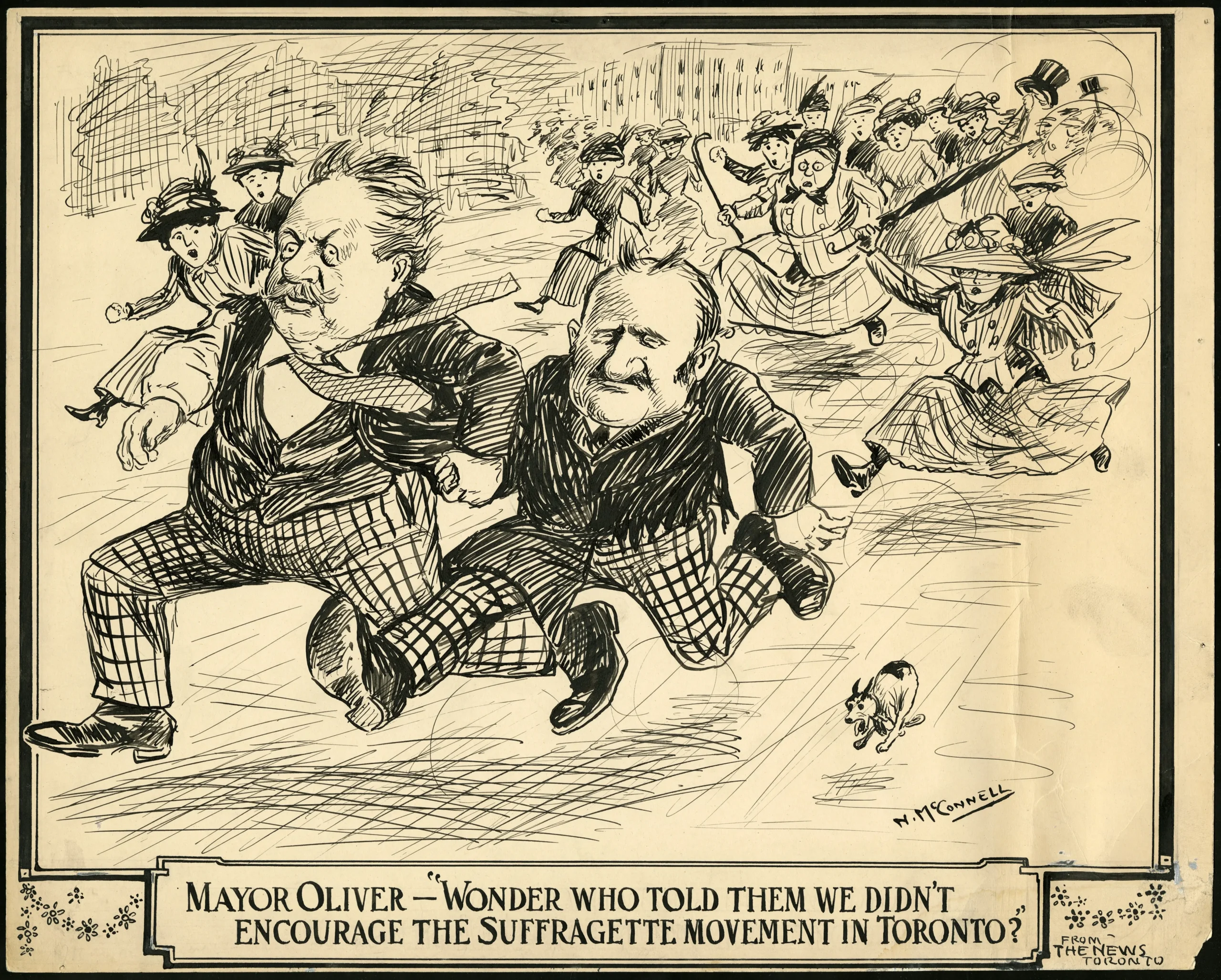
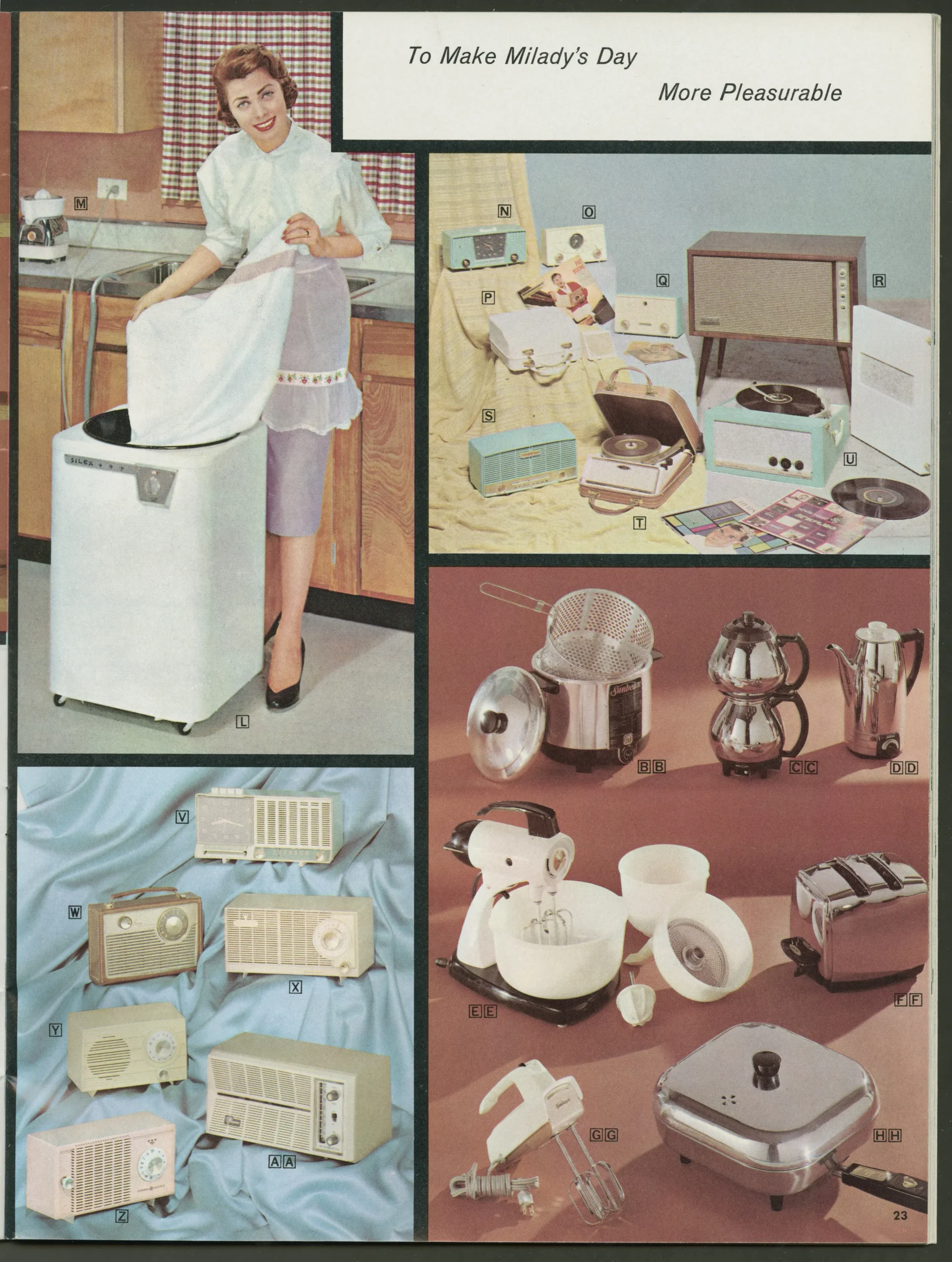
Life on the Home Front
Canada’s participation in the World Wars was not only fought on the battlefield. The Home Front fundraised, produced arms, manufactured vehicles and recruited soldiers. The General Engineering Company of Canada (GECO) was located in Scarborough and operated from 1941-1945. This munitions plant produced millions of munitions during the Second World War. GECO was one of the many companies that hired women to do jobs that were typically held by men. For women, the shift from the private sphere to the public one changed the landscape of Canadian labour.

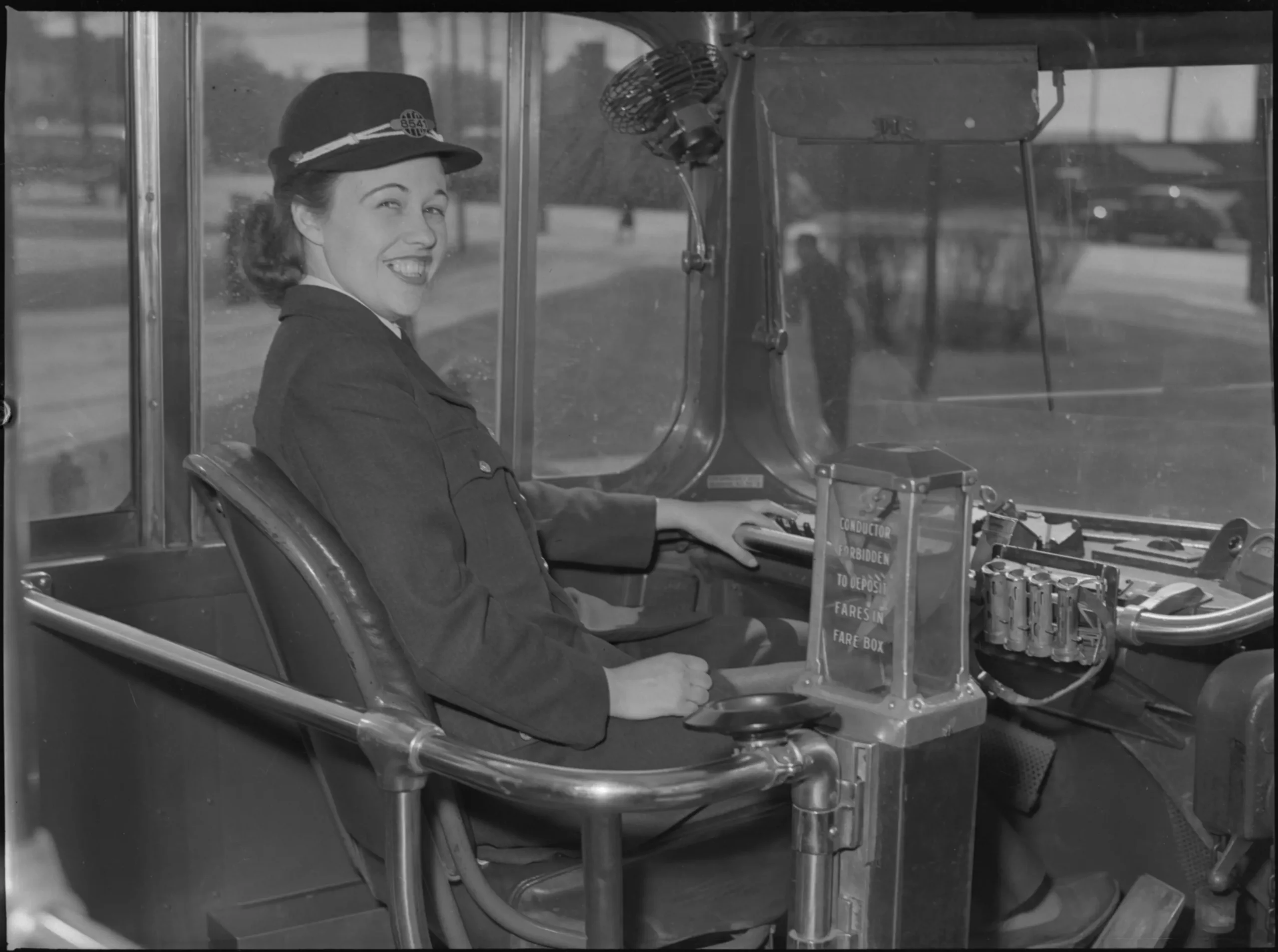
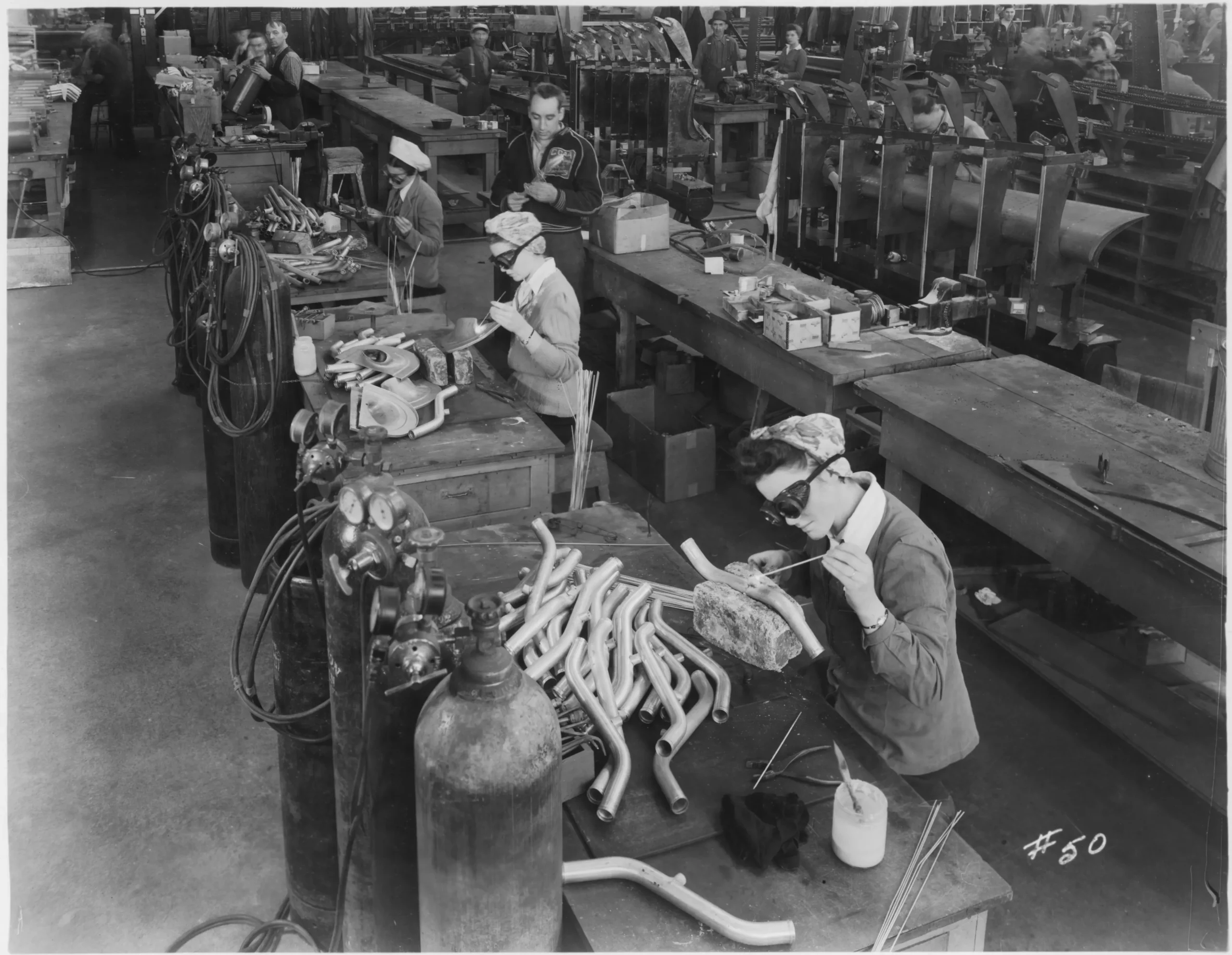
Wartime recreation
Despite the changes the wars brought, recreation continued to be important. GECO (like other companies) had a dedicated sports and recreation club. This club organised various sporting events and company-wide dances. The company also ran a newsletter called the Fusilier, which provided workers with important updates about company activities and ways that employees could find moments of joy alongside work.
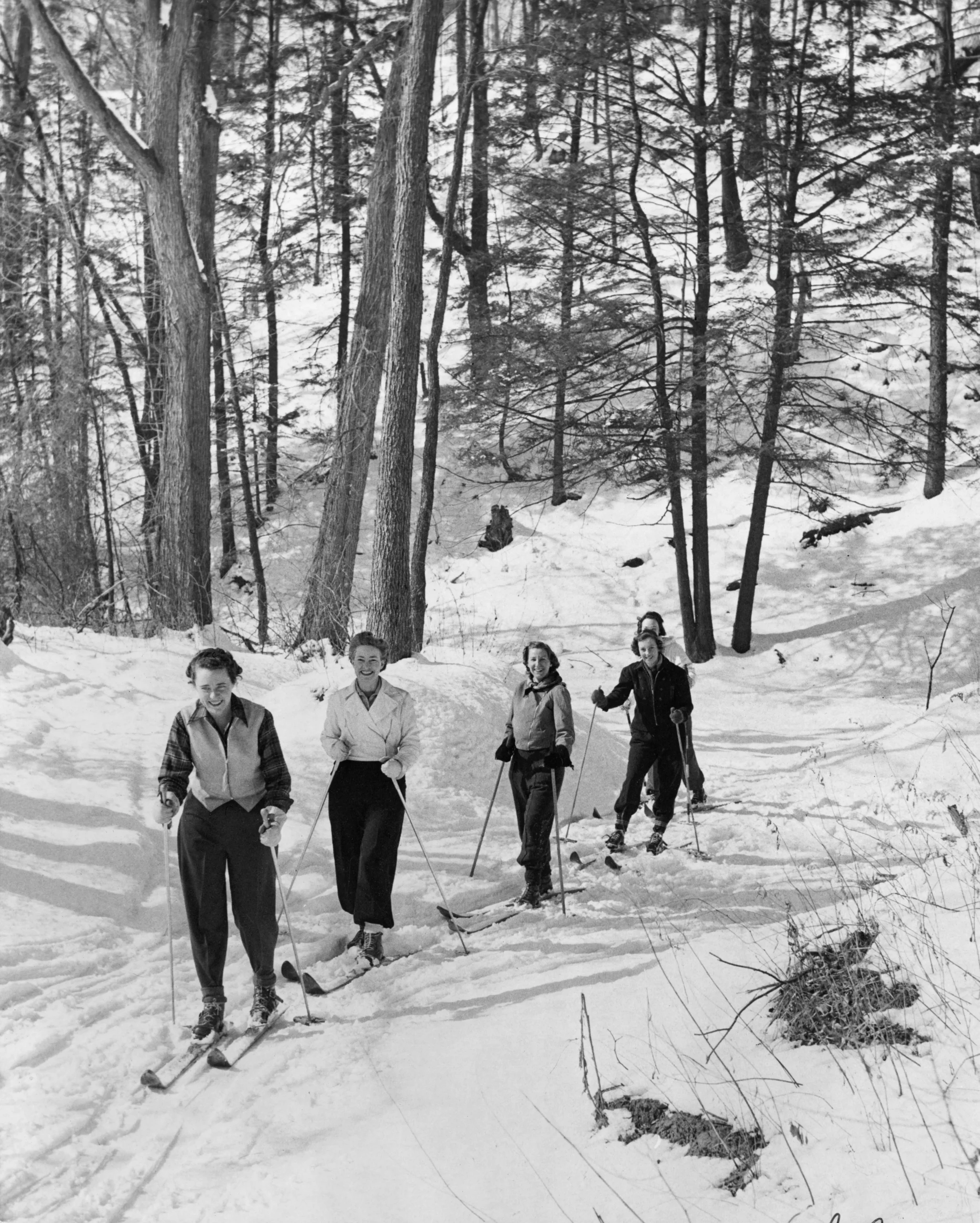
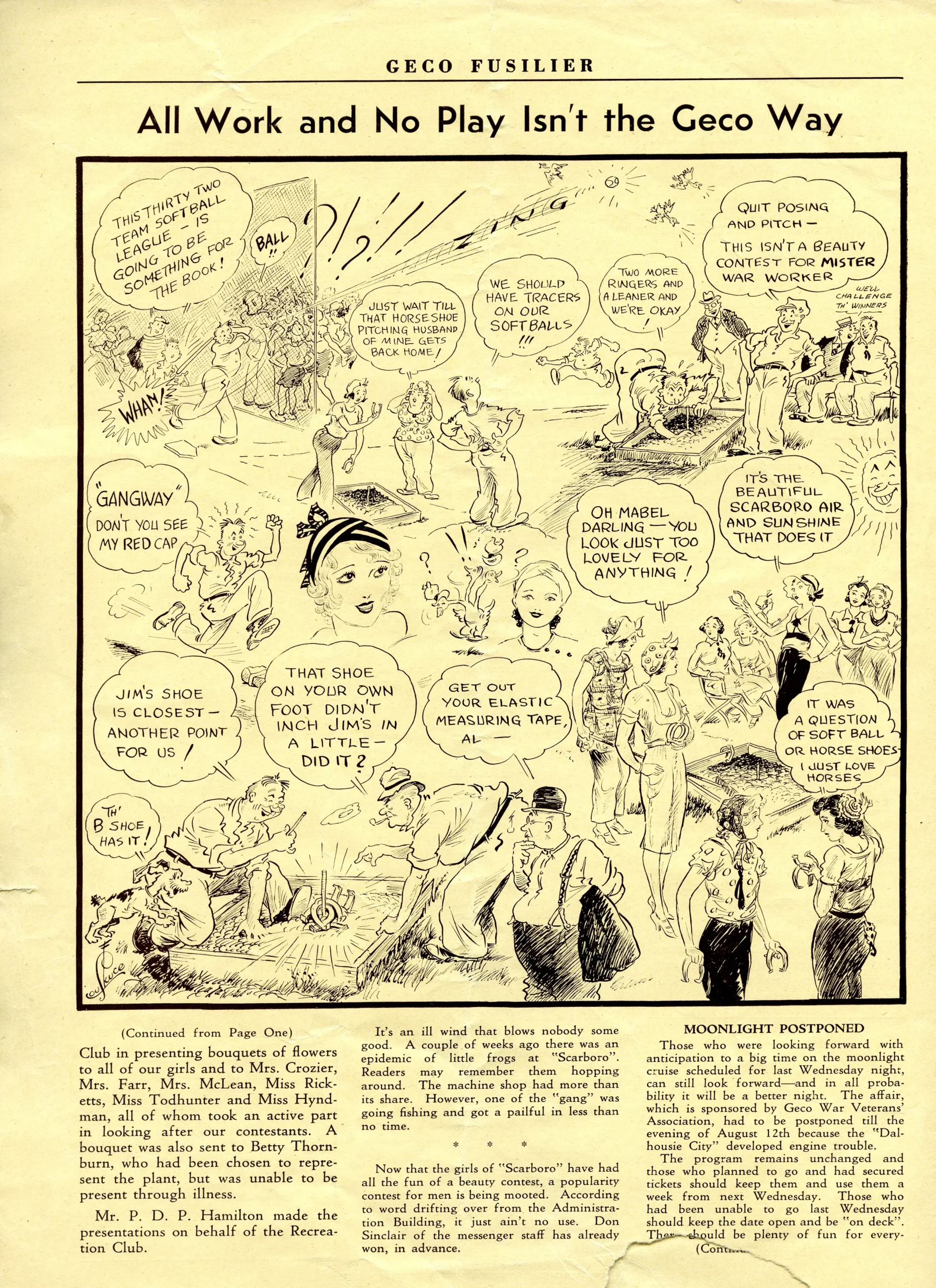
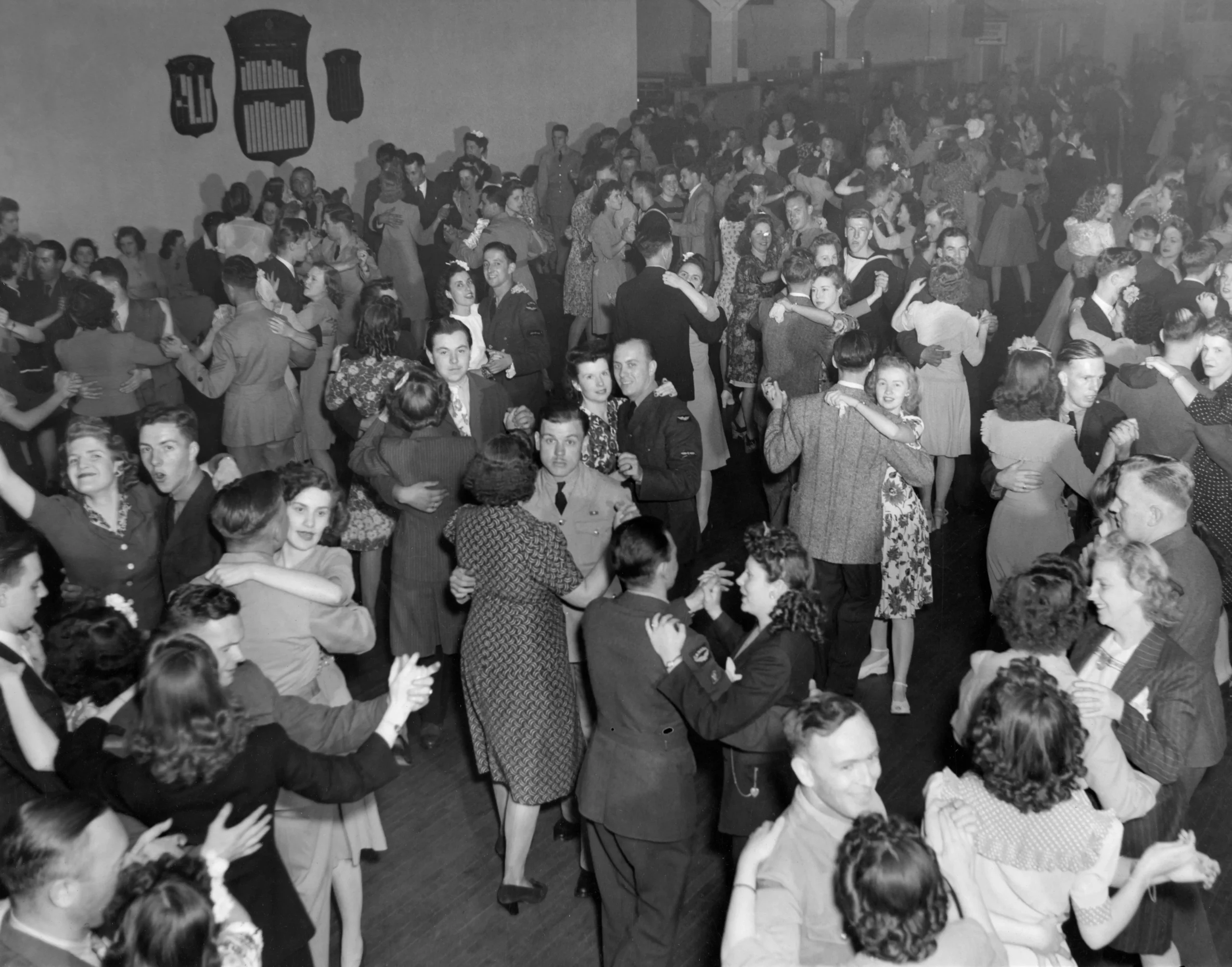
Beauty queens
GECO was not the only company engaged in wartime recreational activities. In 1942, the “Miss War Worker” contest was hosted in Toronto. This beauty pageant gathered contestants from military manufacturing plants across Canada, including GECO. Though no GECO employees were among the top winners, GECO worker Kathleen Russell won fourth place. Her success in the pageant earned her a spot on the front page of the Fusilier.
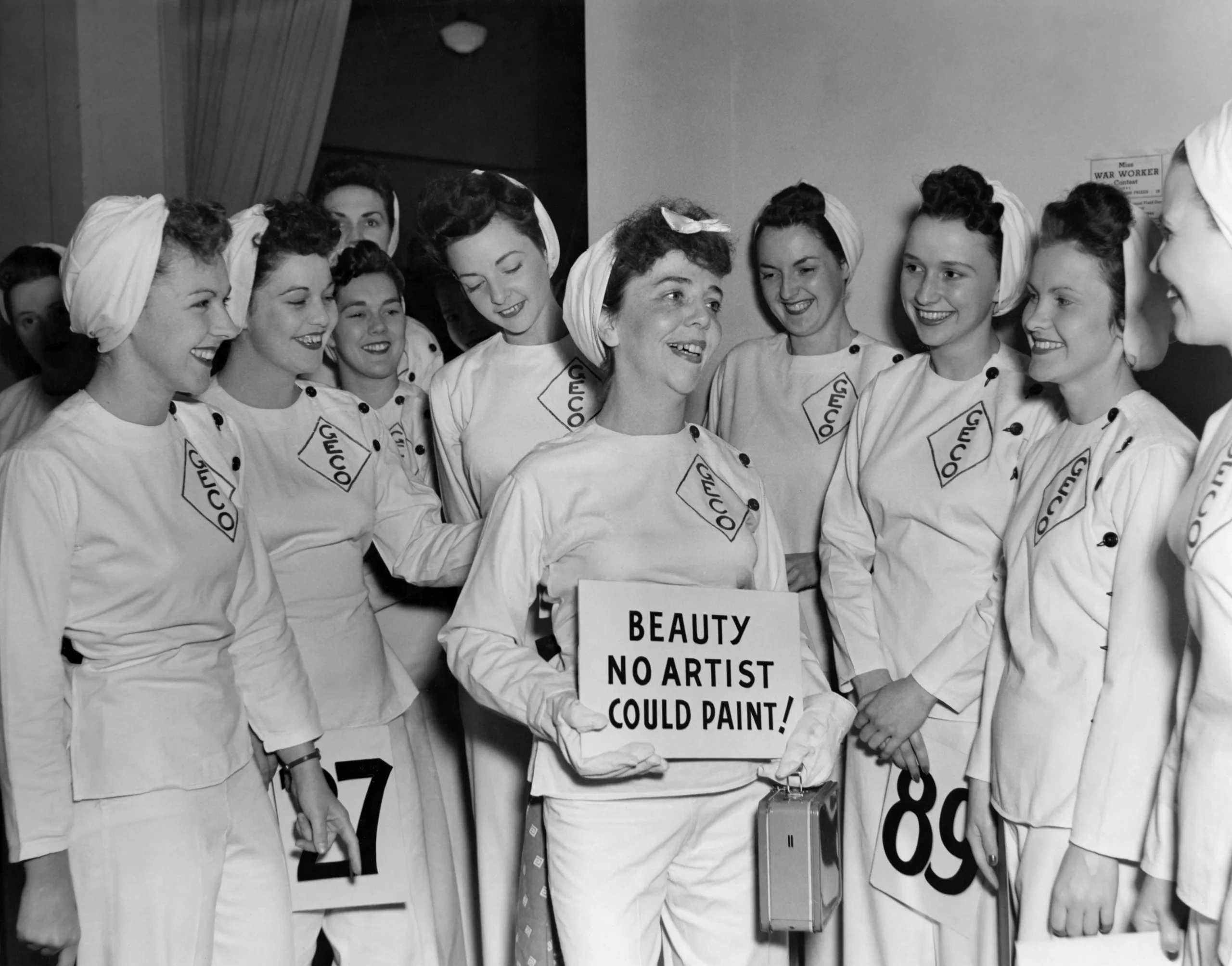
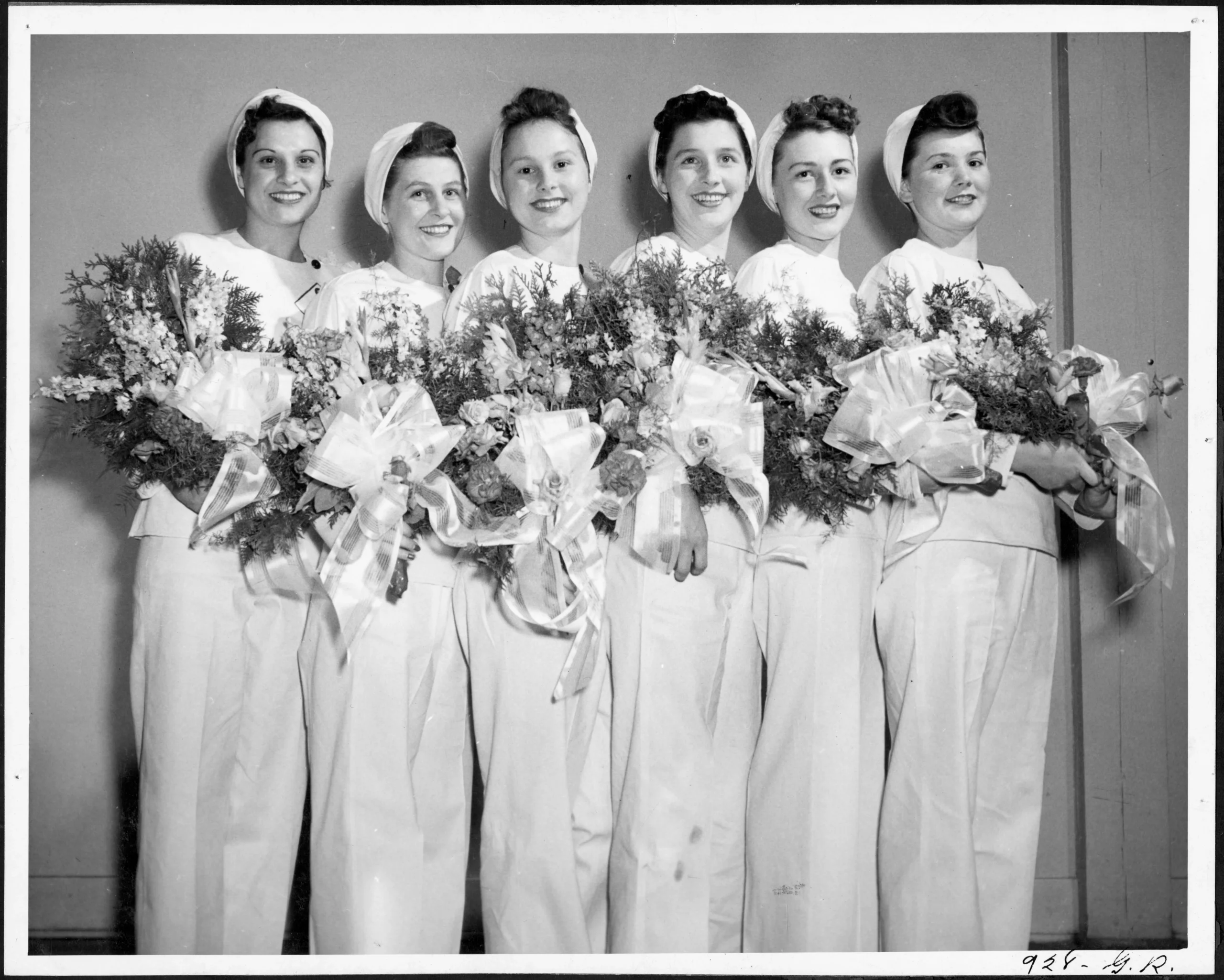
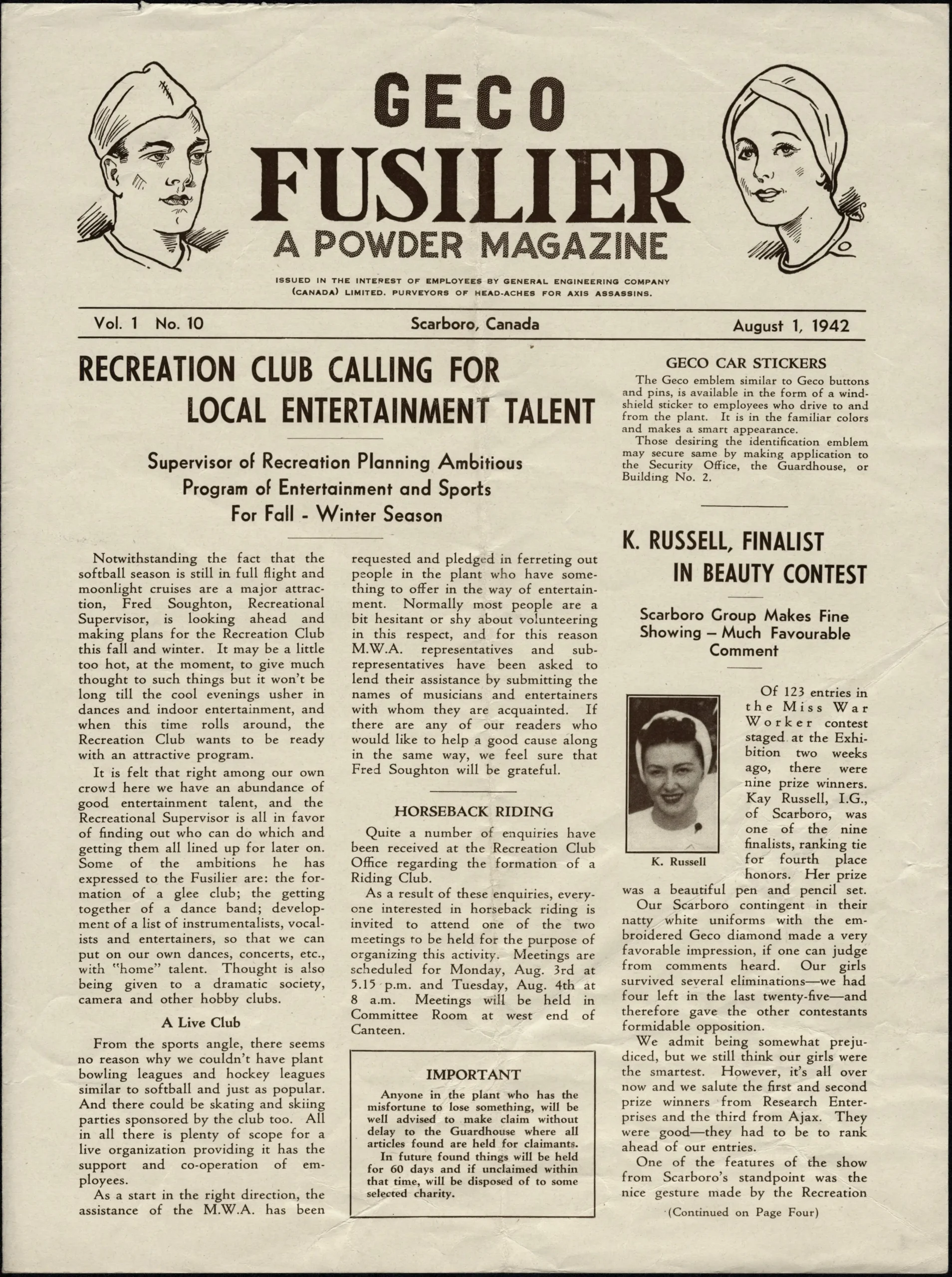
Back to: Chapter 2
Black Canadians
Return to:
Online exhibits
Looking for more records?
Search our collection